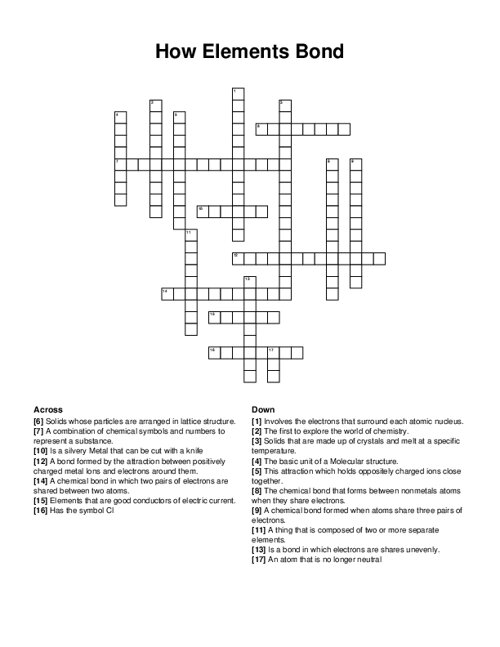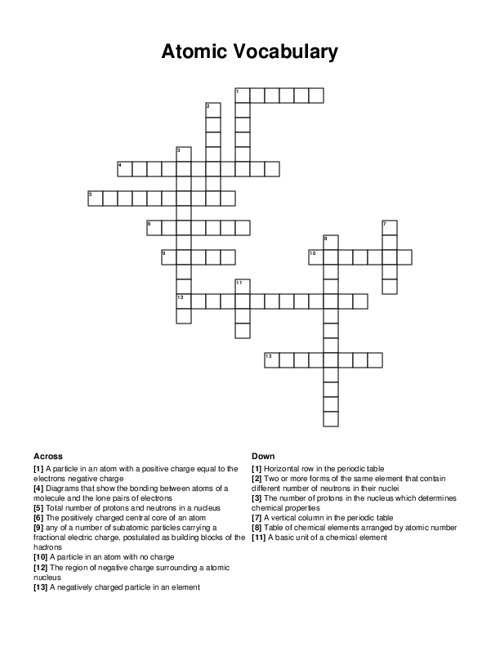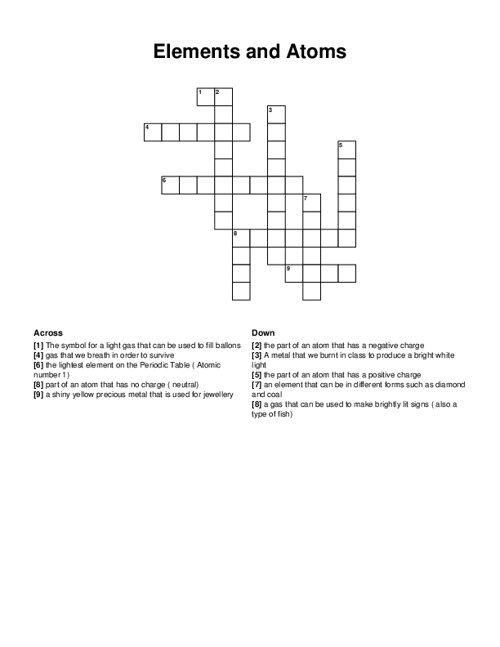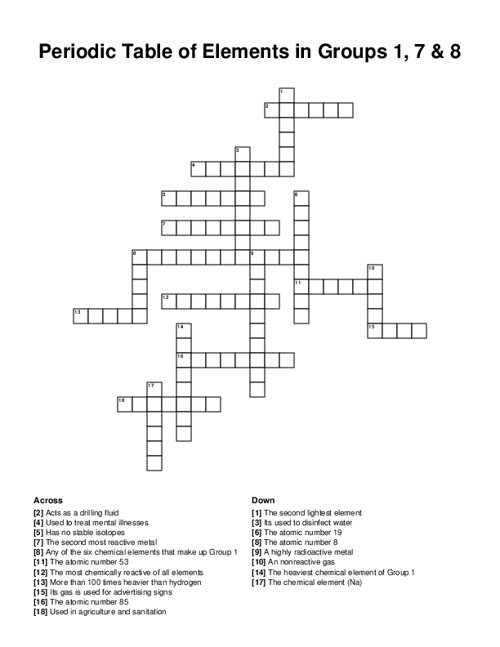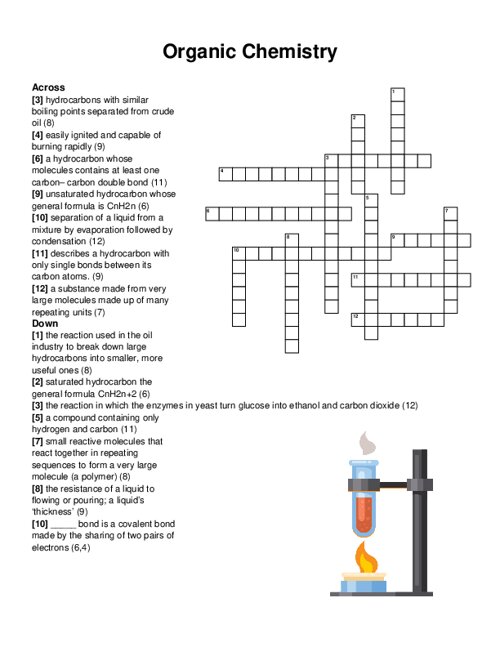Inorganic Chemistry Vocabulary Crossword Puzzle
Download and print this Inorganic Chemistry Vocabulary crossword puzzle.
Related puzzles:
QUESTIONS LIST:
- isotopes : atoms with the same number of protons but a different mass number
- polydentate : when a ligand has multiple coordination sites and will bond to a metal center in more than one location
- fission : when an atom is bombarded by a neutron to make two smaller atoms
- oxidation : when electrons are lost from an atom
- coordination : a type of isomer when two molecules are different complex ions but have that same molecular formula
- complex : a type of chemical compound with a central metal atom/ion surrounded by ligands
- nuclear : a type of reaction that leads to changes in the nucleus of an atom
- homoleptic : a complex where all the ligands are the same
- fluxinol : a complex that undergoes rapid structural changes
- wavefunction : a function that describes the energy and behavior of an electron
- node : a place where there is zero probability of finding an electron
- cathode : th electrode where a reduction reaction takes place
- organometallic : a division of chemistry that involves the study of complexes with at least metal - carbon bond
- electrophile : a chemical that accepts electrons from a nucleophile to form a bond
- thermodynamics : the study of the relationship between heat and other forms of chemical energy
- positron : a subatomic particle that has the same mass of an electron but the opposite charge
- amphiprotic : when a molecule is able to act both as a bronsted acid and a bronsted base
- hydrate : a type of isomer where two molecules have a different number of associated water molecules
- hypovalent : an atom that is happy with less than 8 electrons
- aromatic : when a cyclic compound is planar, conjugated, and has 4n+2 pi electrons
- anion : the type of ion formed when an atom gains electrons

